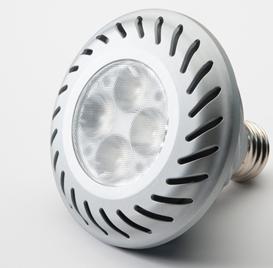
Privacy statement: Your privacy is very important to Us. Our company promises not to disclose your personal information to any external company with out your explicit permission.

Recently, on the Internet, there has been a widespread belief that LED lights can damage the retina and even cause blindness. Does the LED light really damage the eyes? Which lights around us are LED lights?
Check the reporter's investigation.
In life, bulb lamps, table lamps, and ceiling lamps commonly used in indoor homes, mining lights used in work, outdoor lawn lamps, and other landscape lights may be LED lights. LED lamps are light fixtures made with light-emitting diodes. They are more energy-efficient and environmentally-friendly than our common incandescent and energy-saving lamps and have a longer life.
According to CCTV Finance’s “First Time” report, the white light of most LED lights currently on the market is covered by a layer of yellow phosphor on a blue LED chip that emits blue light, which is mixed to give white light. However, there are many reports that the blue light produced by LED lights will damage human retinas. In this regard, Yu Anqi, deputy director of the National Electric Light Source Quality Supervision and Inspection Center, said that LED luminous points are particularly small, and the luminous intensity per unit area is particularly bright, which is its characteristic. Because of this characteristic, it is possible that the blue light is generally strong, and that it is harmful if the eyes directly look at it.
In fact, Blu-ray is everywhere in our lives, like LED lights, computer monitors, mobile phones, digital products, LCD screens, etc., all have the shadow of blue light, but some blue light is more, and some are less. In fact, these do not have to fear. If we are surrounded by so much blue light, if it is harmful, then we may have had eye disease. However, under what circumstances will Blu-ray cause harm to human eyes? How great is the harm? Experts have done experiments for us.
According to national standards, the risk of blue light to the retina is divided into four levels: first, non-hazardous, followed by type 1 dangerous, low-risk, followed by type 2 and finally 3, high-risk, light In an instant, it can cause irreversible damage to the eye within a few seconds.
The so-called Blu-ray hazard refers to the damage that will be caused to the human eye in a short time or moment when the radiance of blue light reaches Class 2 or Class 3 danger. So what kind of danger level do we use for LED lights?
The reporter went to the lab and mainly tested four samples. One was an LED lamp, one with a diffuser cover, one with a diffuser cover and one half power driven LED, and one with a diffuser full power drive. LED lights. After testing, LED spotlights and LED lights with diffuser cover are all non-hazardous.
What the professional will do next is to remove the LED light blue hazard experiment of the diffuser cover. After filling this LED light up to the full drive power, the reporter noticed that when engineers were facing the light, they could no longer look directly at the light source. Such a strong blue light, its test results make everyone very surprised: dozens of seconds of direct vision can damage the retina, damage is irreversible, severe eyes may even paralyze.
Through the blue light hazard test with different brightness, the engineer concluded that ordinary LED light spotlights and LED lights with diffuser covers have a blue light amplitude within the normal range and will not cause damage to the retina of the human eye without adding. Diffusion caps and LED lamps with a power greater than 1 watt, regardless of full power or half power, can cause significant damage to the eyes.
Expert Tip: How to reasonably use LED lights, then how do we rationally use LED lights? Experts believe that during the day time, you can use a higher lighting color temperature to enhance people's work mood to achieve higher work efficiency. In the evening, it is necessary to use low color temperature lights to give people physical reminders and need to rest.
Judging from the results of the current tests, the LED lamps for household use on the market are basically non-hazardous. To use the LED lights correctly, do not look directly at the LED lights. Do not remove the diffuser cover. The light leakage of the diffuser cover should be promptly replaced. When consumers purchase, they should pay special attention to the packaging. Choosing a color temperature below 4000K is usually called warm light, with more red components and less blue components, just like the morning sun.
September 25, 2024
September 24, 2024
Mail an Lieferanten
September 25, 2024
September 24, 2024

Privacy statement: Your privacy is very important to Us. Our company promises not to disclose your personal information to any external company with out your explicit permission.

Fill in more information so that we can get in touch with you faster
Privacy statement: Your privacy is very important to Us. Our company promises not to disclose your personal information to any external company with out your explicit permission.